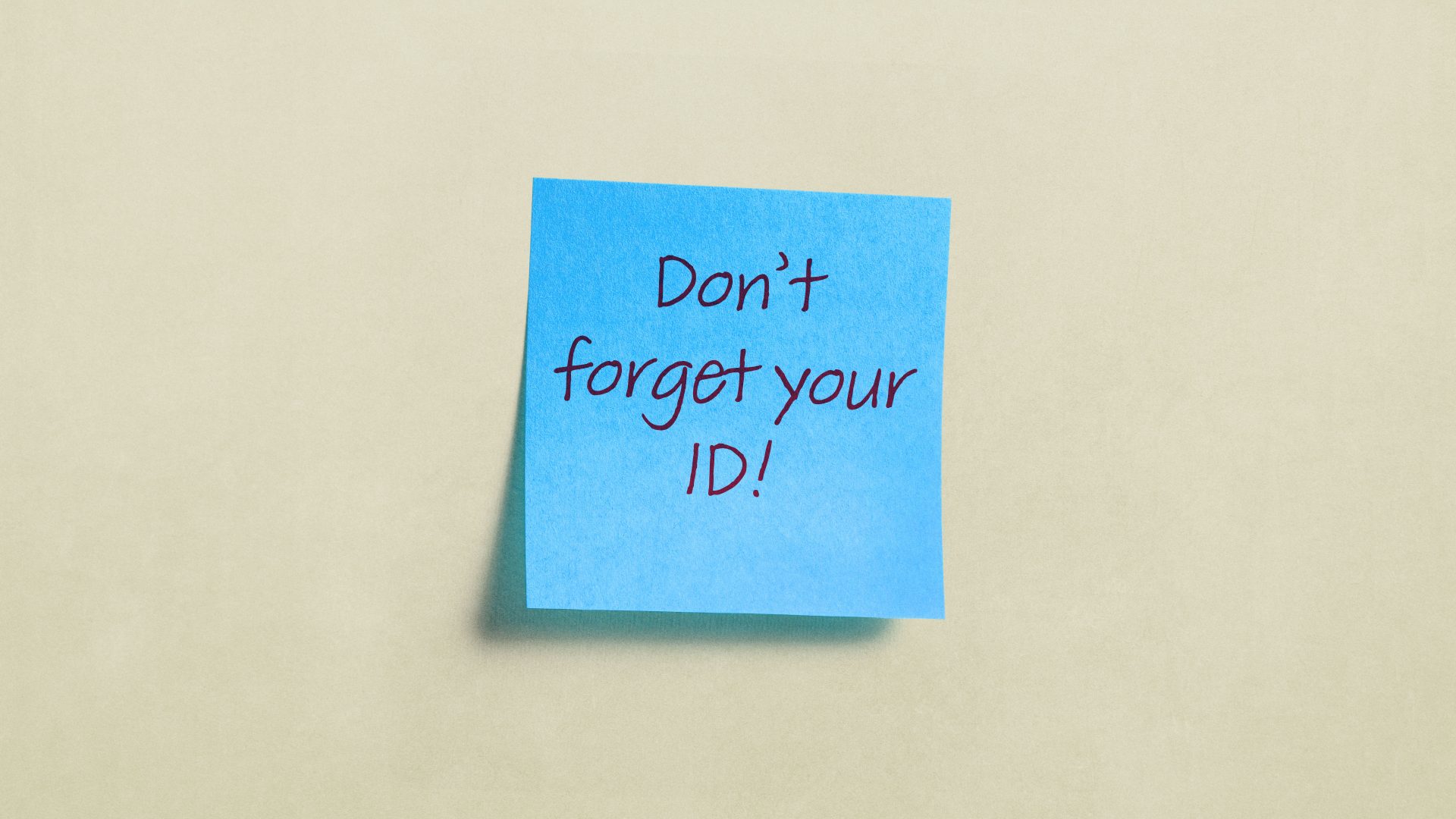The row over Labour’s attack ads has added unexpected spice and spite to this year’s local elections campaign, but things will soon return to normal: One set of frontbenchers promising serious action on fly-tipping, while the rivals pose angrily by potholes across the nation’s local newspapers.
Yet May 4’s elections are not politics as usual. They mark perhaps the biggest change to the franchise since the introduction of universal suffrage.
Previously, turning up at your polling station and saying who you were was enough to vote – you did not even have to bring your polling card. But this year, and from here on out, you will have to bring photographic ID (though this has been a requirement in Northern Ireland since 2002).
For such a momentous change, it has barely been publicised – but as the elections get closer, the reality of the new policy is setting in. How many voters will not know that they need photographic ID to vote, and how many of those would actually return with ID if they didn’t have it? And with 3 million people in the UK having no form of photographic ID, how severe is the risk of voter disenfranchisement?
The logic of introducing voter ID is to reduce one particular kind of voter fraud, known as “personation” – where someone turns up at a voting booth in person and pretends to be a different voter.
Every UK election watchdog has stressed in recent years that there have been no large-scale efforts at election fraud via any method, let alone personation. But looking at the statistics really brings it home just quite how non-existent the supposed problem is.
In 2021, there were seven allegations of in-person voter fraud – out of millions of ballots cast – and all of them led to no further action. In 2021, two people accepted a police caution – a woman and her father – because the father had suggested she use her mother’s name to vote locally. In 2020 there were no in-person elections at which to commit this offence, while 2019’s only caution was accepted by someone who used his father’s name to vote.
The police manage to issue charges for fewer than one in 10 offences – and the “solve rate” of crimes has halved since they were first recorded in their current format. Against such a backdrop, what possible justification is there for introducing stringent new requirements for a crime that it seems almost no one commits?
It is hard to find any other legitimate explanation, and the government has made little effort to offer any – preferring to stick instead to hollow but sanctimonious statements about the sanctity of the election process, as if that was better served by disenfranchising millions to prevent a crime that occurs roughly once every two years.
The UK will not become a significant outlier among western democracies in requiring ID. Most European countries require ID at the polling station to vote, including Germany, France and Switzerland. However, in most of these countries there are already national ID card systems, and carrying around a universally issued government ID is a much greater social norm. The UK has traditionally been much more culturally opposed to this kind of “papers please” culture – so it is perhaps ironic that a Brexiteer government is pushing for closer alignment with the continent.
An ID requirement is not universal across Europe – it is not mandatory in Sweden, for example – but even in these cases, more verification is generally required. Swedish voters, to continue the example, are required to have their ballots countersigned if they don’t produce ID.
There is, of course, a cynical explanation for the shift to the UK requiring ID without having the same ID culture, an automatic enrolment, as our European neighbours. It is that the Conservative Party is following the same approach as its US counterpart, the Republican Party – with whom it has shared multiple election advisers. The Republicans have been accused in multiple states of introducing ID requirements as a bid to disenfranchise predominantly Black voters who overwhelmingly vote Democrat.
The Conservatives, then, could be accused of hoping to tilt electoral odds in their favour by making voting more difficult – or even impossible – for groups likely to vote for their opponents. But does the data support that?
There are more than 10 million people in the UK who have neither a passport nor a photo driving licence – so if these were the only ID that could be used to vote, this would mean disenfranchising as many as one in five or one in six voters.
Thankfully, the UK is accepting a much more expansive list of ID that is acceptable – but even with these expanded requirements, 3 million people are left out. The evidence on who lacks ID in the UK is less clear-cut than in the USA, but the Electoral Commission found that: “White groups and mixed White and Black Caribbeans are less likely than other groups to hold a passport. DVLA data showed that women, people under 20 and over 65, and people in London are less likely to hold a driving licence.”
Later research has suggested that older voters – the Conservatives’ core voting base – are the most likely to lack ID, suggesting that there may be a backfire effect against the Conservatives with this policy. However, given the interplay with lower-income groups and Black groups, there are still reasons to think that the worst effects of the policy will be felt by opposition voters.
At first glance, what you’re allowed to show at the booth looks extremely suspect – an Oyster 60+ photocard qualifies as ID for voting purposes, but a student Oyster photocard does not.
Given the stench around this broader policy, it is not surprising that such discrepancies raise suspicions, but in practice these kinds of administrative policy details are generally dealt with by neutral civil servants, often in consultation with bodies like the Electoral Commission.
While initially there seems to be no obvious defence to issuing a ballot for an over-60 card but not a student one, in reality the ID requirements for over-60 Oyster cards (and similar travel passes) are considerably higher than those for their student equivalents – perhaps unsurprising given that the student one grants only a discount, while the over-60 card grants outright free travel.
The obvious double standard that seems to be present somewhat dissolves when you consider this distinction. On top of that, the practicality of who does and does not have a passport and a driving licence kicks in – young people are much likelier to have one or both than older adults.
The biggest problem on polling day is less likely to be people who want to vote and do not have any ID at all, as people who don’t know that it would be needed and don’t bring it with them – and this will be an almost impossible number to actually track.
A small-scale pilot of the scheme in seven council areas found up to 0.7% of voters were turned away without ID and did not return – but it’s not at all clear how representative this will be across national elections, particularly in areas where lots of people don’t routinely drive (such as inner-city areas, which favour Labour).
This was clearly something that was in the government’s power to address: clear public advertising should already be in place highlighting the change of rules. The government could have considered proactively offering the public either a postal vote or approved ID. Ballot papers could have been flagged more clearly with the new requirements.
Special provisions should clearly be made for voters in households where English is an additional language, and there should have already been clear and well-communicated plans as to what steps have been taken to support voters with learning impairments, or other vulnerabilities. Instead, there has largely been silence.
The good news is that there is still plenty of time to take action to make sure you can vote, and that the people you know can vote too. Below is a checklist of easy actions you can take, any one of which should ensure your right to vote on May 4.
Those who canvass or leaflet for the party of their choice might wish to go further – it is surely a great thing to mention on the doorstep (and could pick up points for decency if you remind people who say they won’t vote for you).
The government is passing a bad law for no defensible reason. That surely makes it a moral imperative to make sure it garners them absolutely no advantage come polling day.
Make sure you can vote
1) Review the list of acceptable ID
You might already have the ID you need to vote, and if it’s not something you carry around daily, you can leave it with your polling card for use on the day. The Electoral Commission has a full list of acceptable ID here: shorturl.at/uyz46
2) Apply for free ID to use for voting
The government has created – but done almost nothing to promote – a new form of ID that can be used to vote (but not for anything else). They are called Voter Authority Certificates, and you can apply for them in English or Welsh. The deadline to apply for this year’s elections is April 25 and the form is on gov.uk.
3) Apply for postal voting
Postal voting still requires no ID in the UK, and anyone is eligible to apply for a postal vote for any reason. There is a form to complete, which can usually be submitted by email, that must be sent to your local council – which must receive it by 5pm on April 18
4) Make sure your friends and relatives know about the change
If you’re sorted, try to check in with other people you know who you are sure will want to vote, but who might not have heard about the new rules. Feel free to point them towards this article!




